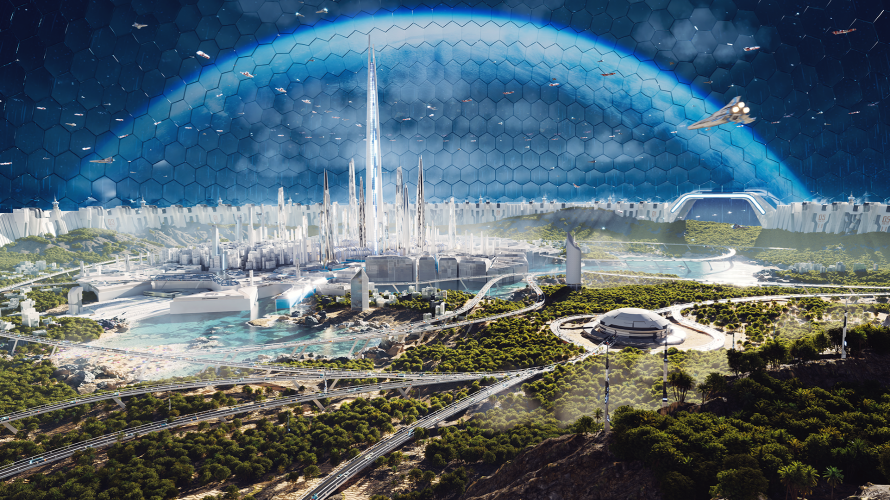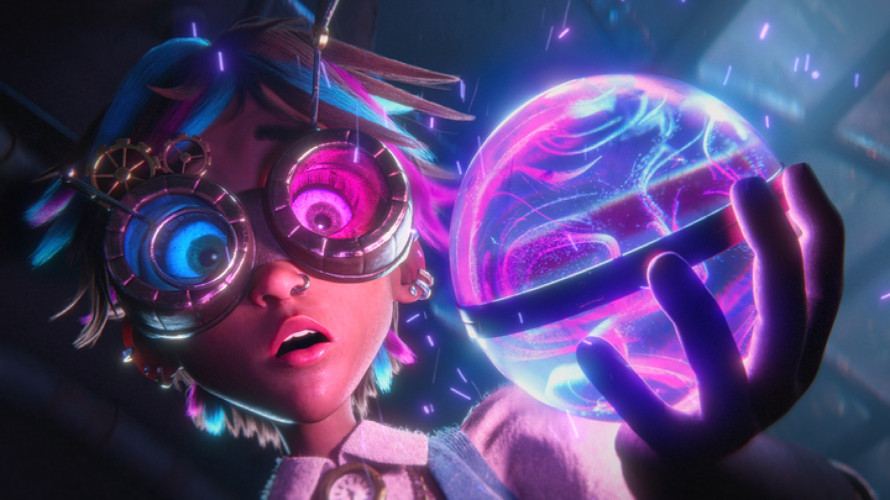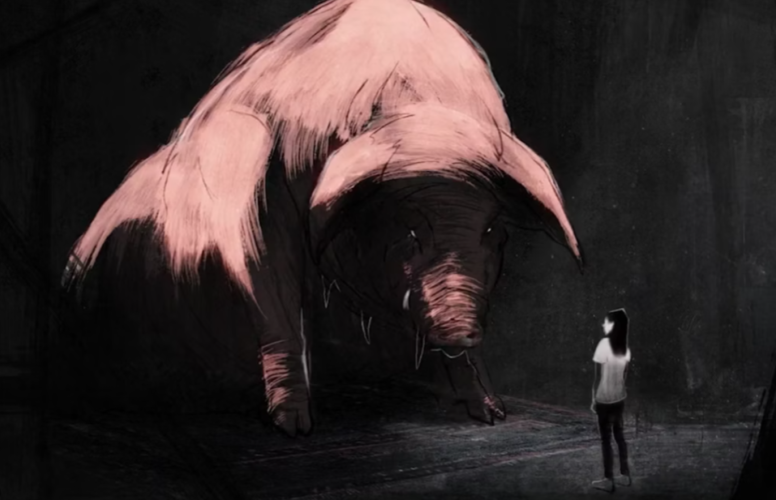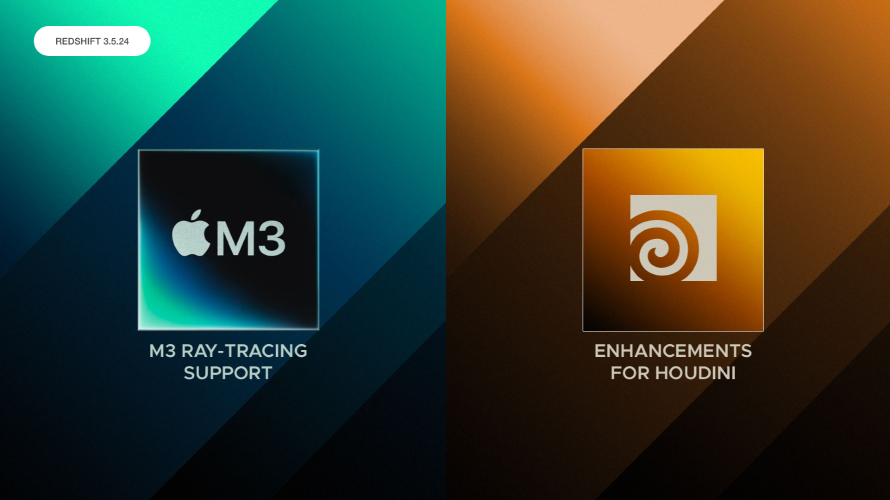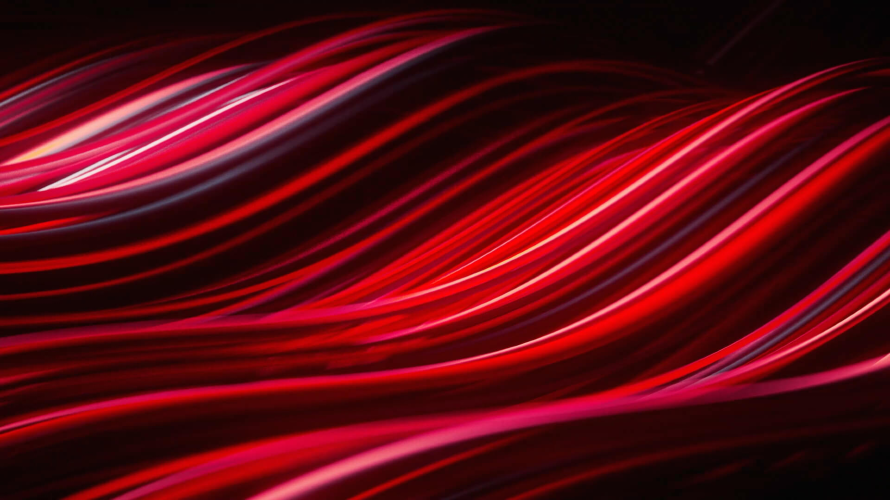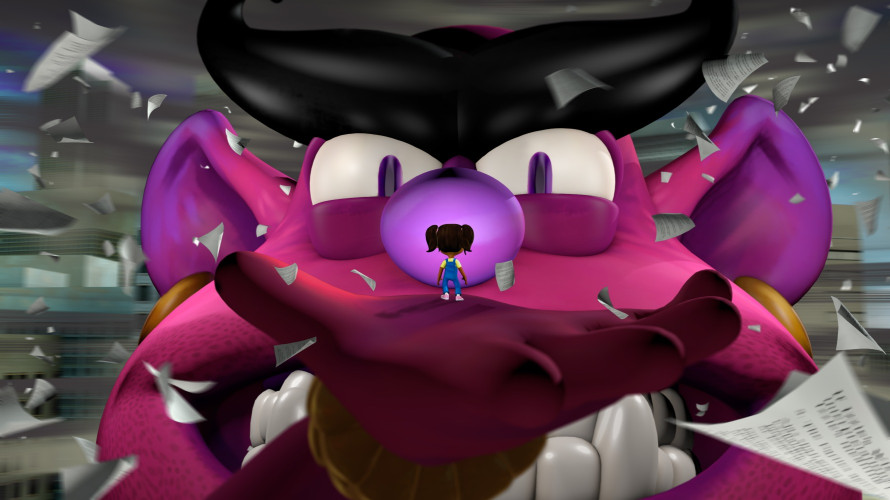World’s Most Complete Rendering Tool Brings Scattering, Custom Lighting and Faster Speeds to More 3D Artists
Today, Chaos releases V-Ray 6, update 1 for Maya and Cinema 4D, a joint update that brings new creative weapons to artists working in film, TV, streaming and design. Whether they want to add millions of objects, disrupt physical lighting constraints or produce photorealistic scenes much faster, there’s now a better way to do it in V-Ray 6.
Chaos Scatter can now quickly place objects into scenes in a believably randomized or patterned way in just a few clicks, without taxing an artist’s memory. While ideal for adding forests, grass and crowds, Chaos Scatter can apply its capabilities to any environment — whether natural or man-made — making it easy to scatter millions of objects.
Using Custom Light Decay, users can determine exactly how they want light to behave based on the source distance. Artists now have the freedom to alter a light’s intensity, hotspots and spread/length of rays, opening artistic effects that diverge from physical norms.
In terms of speed, static mesh and hair optimizations can now take artists to first pixel 2.5 to 7x faster. Further savings are possible with the updated V-Ray Profiler (new to V-Ray for Cinema 4D), which can now highlight even more hot spots for users to address and tweak. New metrics include how long it takes to export a scene, compile geometry and displacement, load bitmaps and more, so artists can make sure their pipeline is running smoothly.
Additional features include:
-
NVIDIA AI Denoiser Upscaling — For the lookdev and preview stages, users can take advantage of NVIDIA’s new AI Denoiser, which promises to boost rendering speeds by over 3x.
-
V-Ray Frame Buffer: Masking for Post Effects — Even more post-processing control is now available, right from the V-Ray Frame Buffer. With this new masking option, artists can decide which objects to apply lens effects to, which ones to blur, sharpen or even denoise — all without re-rendering.
-
Compressed Textures Mode — Artists can now render texture-heavy scenes with V-Ray GPU in a more memory-efficient way. Users can save an average of 50% of their GPU memory, while adding additional levels of detail, all without sacrificing shading quality.
-
V-Ray Clipper Mesh Mode — Users can now render complex cutaways and sections using any mesh object with V-Ray GPU. Rather than relying on Boolean operators, users can animate the clipper to achieve complex effects with just a few clicks.
-
Bump to Glossiness — This new node automatically generates the correct glossiness for normal-mapped surfaces at any distance to avoid characters’ skin looking too shiny.
-
Enhanced Procedural Clouds — Cloud density, patterns and new final touches with contrails can be used to create new, better-looking procedural skies.
Along with the universal features available to both the Maya and Cinema 4D users, each platform will also receive a handful of additions specific to each tool.
Only in V-Ray 6 for Maya, Update 1
Artists using V-Ray 6 for Maya will receive support for the latest versions of MayaUSD, as well as Beauty and masking render elements, and V-Ray Object Properties. Additionally, emissive materials can now be included in Light Selects or fine-tuned in Light Mix right in the V-Ray Frame Buffer. Update 1 also includes support for both Maya 2024 and Apple Silicon processors.
Only in V-Ray 6 for Cinema 4D, Update 1
The V-Ray Toon Material now offers a host of stylistic options, ranging from cel shading to 2D cartoon effects and more. A V-Ray Toon object will provide even more creative control, allowing users to customize their outlines. Support for native MoGraph Color Shaders has also been included, introducing the ability to randomly assign colors to objects or particles and use effectors to colorize based on different criteria. In addition, custom user attributes can control materials, textures and other parameters at once, making it easy to manage multiple objects/particle systems within a scene.
For product visualizations and surface details, update 1 brings cylindrical and bump upgrades to V-Ray Decal. Designers can now easily add anything to curved surfaces, from stickers and labels to imperfections, in a few clicks. Additive bumps have also been added, so artists can blend surface and decal bumps to make highly realistic embossed logos, lettering, cracked paint and more.
Pricing and Availability
V-Ray 6, update 1 for Maya and V-Ray 6, update 1 for Cinema 4D are both available now. Starting with V-Ray 6, V-Ray subscription licenses work for all supported host applications to include Maya, Cinema 4D, Houdini, 3ds Max, Nuke, Revit, Rhino, SketchUp and Unreal. Pricing information can be found in the V-Ray pricing page.



